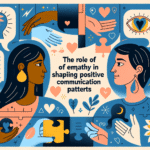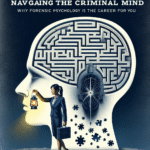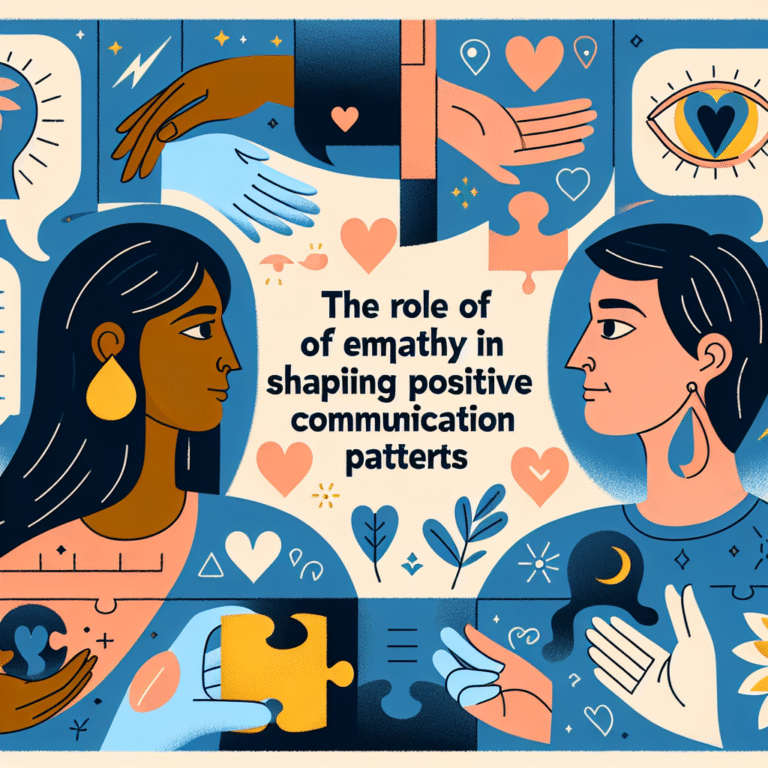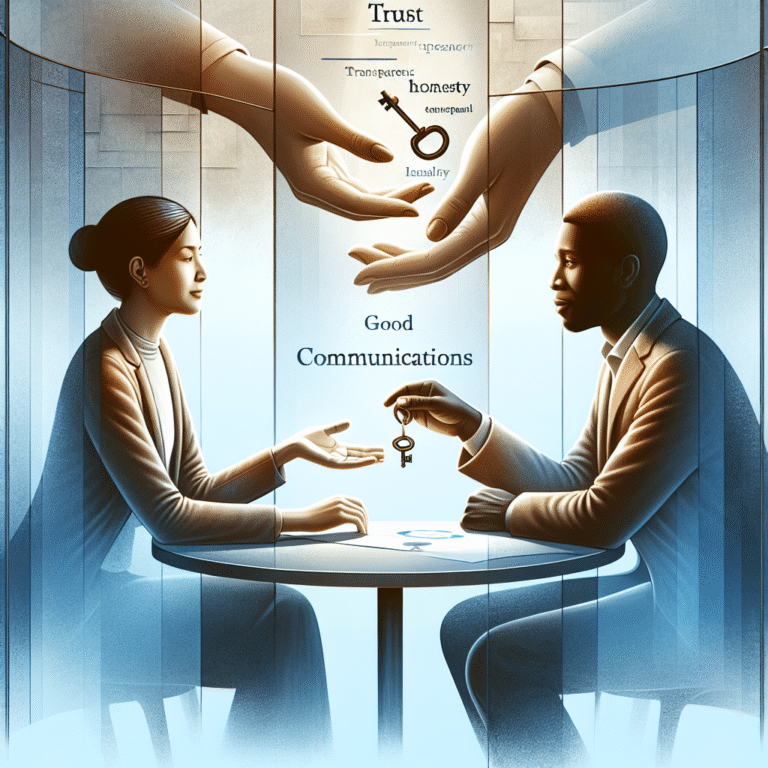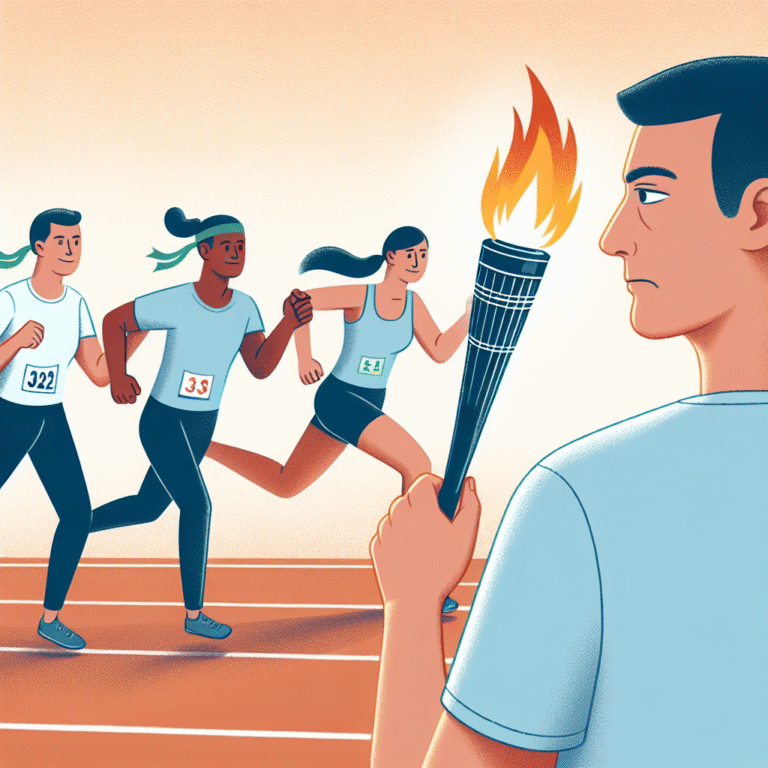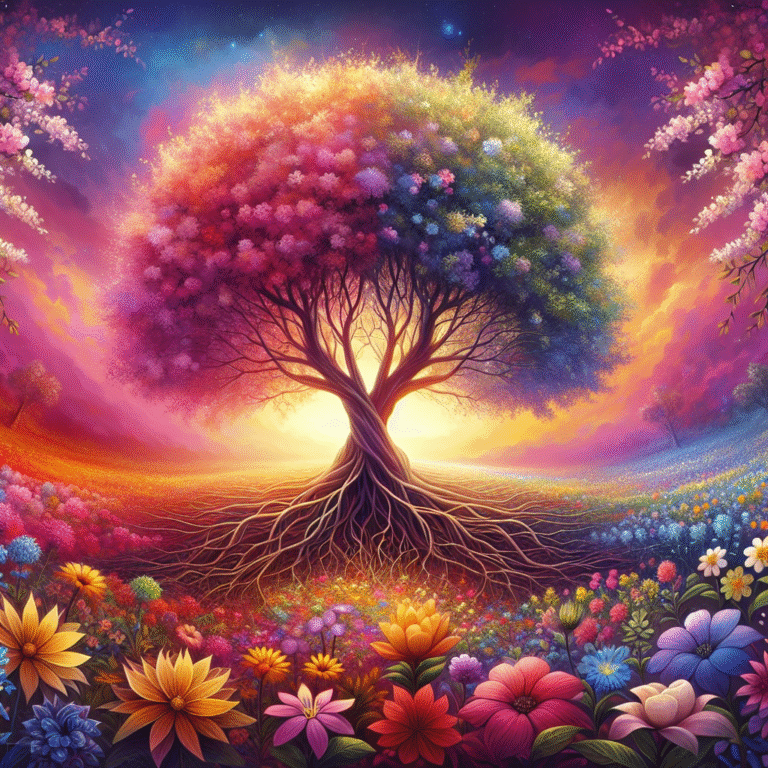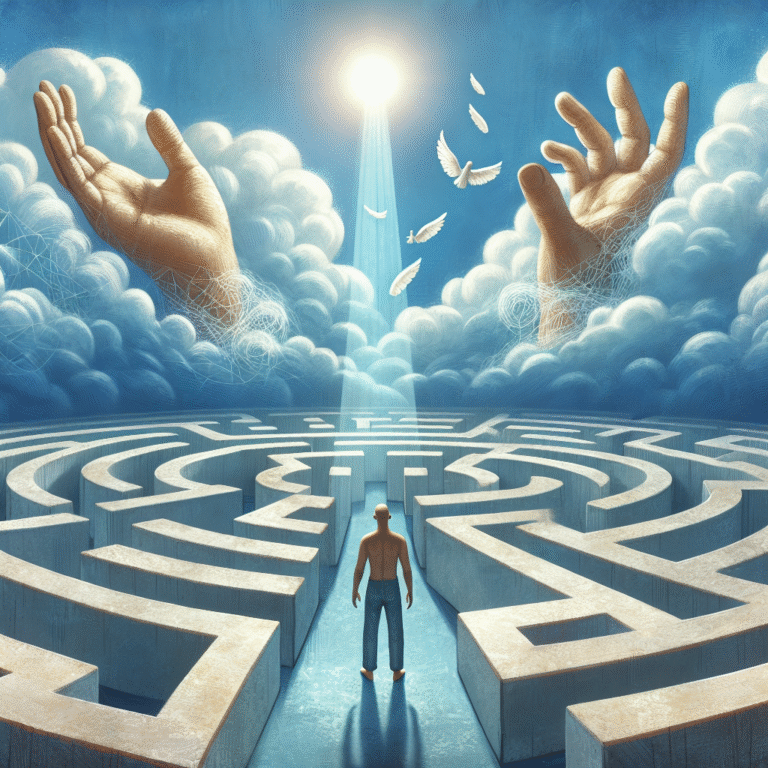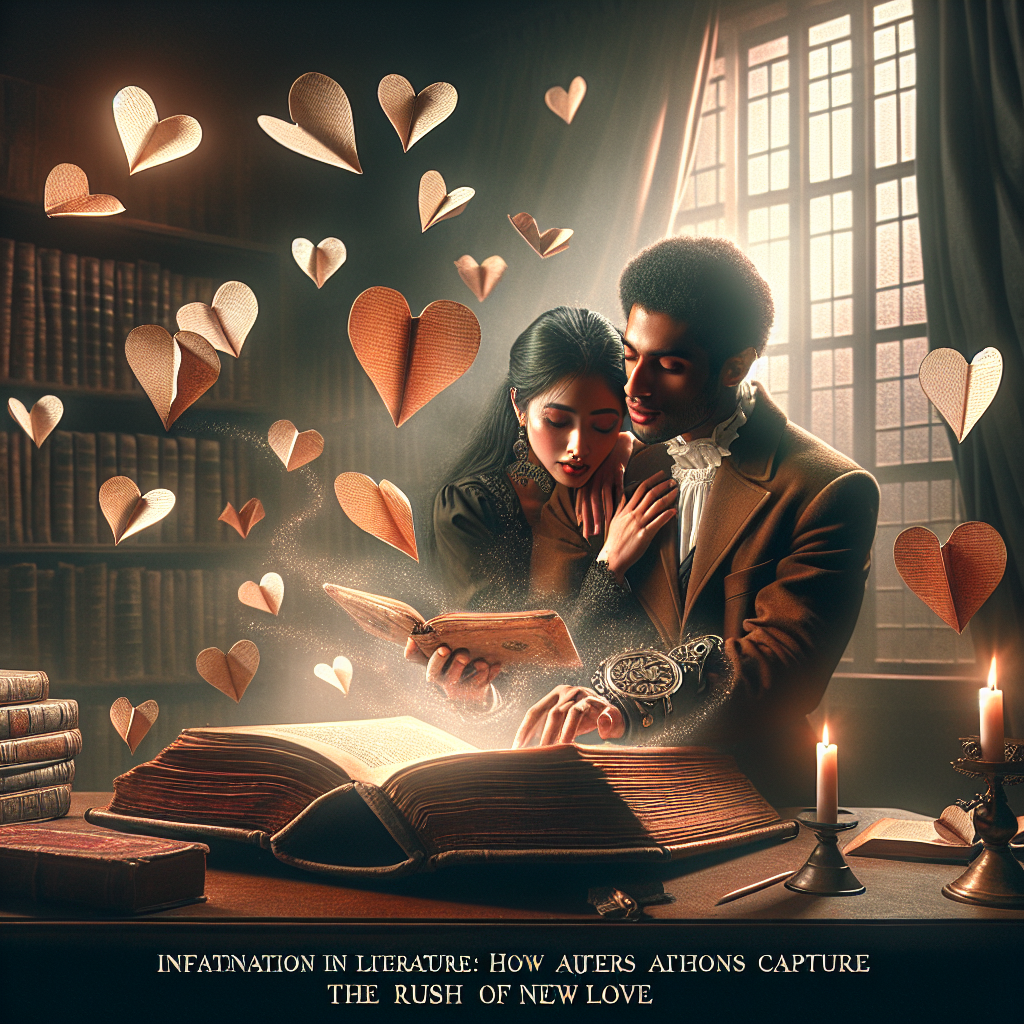
Introduction
Infatuation, that intoxicating rush of new love, has served as a timeless muse for writers throughout history. From the fluttering heartbeats of Jane Austen’s characters to the dramatic passions of the Brontë sisters, literature has profoundly captured the essence of falling in love. This article explores Infatuation in Literature: How Authors Capture the Rush of New Love, revealing how various authors skillfully evoke the exhilarating highs and dizzying lows of this emotional state. Whether you are a writer seeking inspiration or a reader wanting to understand the intricacies of love stories, this exploration offers valuable insights into the art of portraying infatuation.
The Emotional Landscape of Infatuation
Infatuation is often described as a fervent but short-lived passion that can take many forms, from obsessive admiration to euphoric bliss. It is this complexity that makes it a compelling theme in literature. Authors have harnessed infatuation not just to tell love stories but to examine the psychological intricacies of human relationships.
The Psychological Underpinning of Infatuation
Psychologically, infatuation is often linked to a combination of idealization and projection. When characters experience infatuation, they frequently project their desires and fantasies onto their love interests, creating an intense but often distorted perception of reality. This psychological phenomenon not only drives the plot but also serves as a mirror reflecting the characters’ inner lives, revealing deeper truths about their desires.
Classic Case Studies: Infatuation in Literature
To fully appreciate how authors capture the rush of new love, let’s delve into some classic examples that highlight the theme of infatuation.
Case Study 1: "Pride and Prejudice" by Jane Austen
In "Pride and Prejudice," Elizabeth Bennet and Mr. Darcy’s relationship encapsulates the tumultuous nature of infatuation. While Elizabeth initially harbors a strong dislike for Darcy, her feelings evolve dramatically. Austen captures the essence of infatuation through Elizabeth’s changing perceptions and internal conflicts.
Analysis: Austen’s use of free indirect discourse allows readers to access Elizabeth’s thoughts, vividly illustrating the transformation of her feelings. The delicate balance between infatuation and genuine affection becomes apparent, as Elizabeth wades through her initial judgments to discover deeper emotions.
Case Study 2: "Wuthering Heights" by Emily Brontë
On the other end of the spectrum lies Emily Brontë’s "Wuthering Heights," where infatuation manifests in the destructive love between Heathcliff and Catherine Earnshaw. Their passionate connection transcends societal norms, showcasing the darker side of infatuation.
Analysis: Brontë employs intense imagery and tumultuous language to express the characters’ overwhelming emotions. The story emphasizes how infatuation can lead to obsession, revealing the extremes of love, making it a poignant exploration of the human condition.
The Modern Perspective: Contemporary Authors and Infatuation
While classic literature provides foundational insight, contemporary authors have also explored infatuation in innovative ways.
Case Study 3: "The Fault in Our Stars" by John Green
In "The Fault in Our Stars," Hazel and Augustus experience a whirlwind romance that captures the fleeting nature of infatuation juxtaposed with the gravity of their health circumstances. Green artfully navigates the tension between youthful passion and life’s harsh realities.
Analysis: Green’s conversational style draws readers into the emotional world of the characters. Through witty dialogue and poignant moments, he explores how infatuation can flourish in the face of adversity, emphasizing the importance of expressing love even when time is limited.
The Elements of Craft: How Authors Evoke Infatuation
Capturing the rush of infatuation involves a blend of literary techniques that resonate emotionally with readers.
1. Vivid Imagery
Imagery serves as a crucial tool in illustrating the sensory experiences associated with infatuation. Whether it’s the flutter of a heartbeat or the warmth of a shared glance, powerful descriptions can create an immersive experience.
2. Dialogues and Inner Monologues
Dialogues often reveal the thrill of new love, while inner monologues provide insight into conflicting emotions. This duality allows readers to experience both the outward expressions and the internal dilemmas faced by characters.
3. Symbolism and Metaphor
Authors commonly use symbolism to enrich the theme of infatuation. For instance, the fleeting nature of a summer bloom can symbolize the ephemeral quality of infatuation, reminding readers that such passions can be both beautiful and transient.
Tables: Infatuation Elements in Literature
| Element | Description | Example |
|---|---|---|
| Imagery | Sensory details to evoke feelings | Heart racing, breathlessness |
| Dialogue | Conversations revealing emotions | Flirtatious banter, confessions |
| Symbolism | Objects or themes representing infatuation | Flowers, butterflies |
Infatuation in Adaptations: From Page to Screen
Infatuation is a theme often explored in adaptations and cinematic interpretations of classic literature. Movies and television bring a new dimension to the literary portrayal of love, enhancing the emotional landscape through visuals and performances.
Case Study 4: "The Notebook"
Adapted from Nicholas Sparks’ novel, "The Notebook" encapsulates the essence of infatuation through the intense summer romance between Noah and Allie. The film effectively visualizes their passionate, tempestuous relationship, making it resonate with a broader audience.
Analysis: The film utilizes visual storytelling, interspersed with nostalgic flashbacks, to capture the essence of infatuation. The chemistry between the actors enhances the emotional stakes, making the audience feel the rush of new love.
Actionable Insights: Capturing Infatuation in Your Writing
If you’re a writer seeking to capture the essence of infatuation in your own work, consider the following tips:
Use Sensory Details: Engage your readers by appealing to their senses. Describe how love feels, smells, and even tastes.
Create Complex Characters: Showcase the characters’ inner conflicts and desires. Infatuation often masks deeper issues, and exploring these can add depth to your narrative.
Leverage Dialogue: Authentic conversations can highlight the chemistry between characters. Use dialogue to navigate the push and pull of their feelings.
Embrace Symbolism: Find creative symbols that reflect the impermanence of infatuation. Objects like wilted flowers or fleeting sunsets can enhance your theme.
- Experiment with Structure: Playing with narrative structure—like flashbacks or non-linear timelines—can reflect the tumultuous nature of infatuation.
Conclusion
Infatuation in Literature: How Authors Capture the Rush of New Love is a multifaceted topic that reveals deep emotional layers and complexities. From classic narratives to contemporary explorations, infatuation serves as a powerful theme that resonates with readers. Its portrayal offers insights not only into romantic relationships but into the very essence of human connection.
As you navigate your understanding of infatuation, consider how these literary examples and insights can inspire your own writing or deepen your appreciation for the stories you love. Love, in all its forms—whether fleeting or eternal—remains a vital part of our shared humanity.
FAQs
What is infatuation, and how does it differ from love?
Infatuation is typically characterized by intense, short-lived passion, while love is more profound, enduring, and often built on trust and understanding.How can authors effectively illustrate infatuation in their works?
Authors can use vivid imagery, authentic dialogue, and character development to illustrate the complexities of infatuation.Are there any negative impacts of infatuation in literature?
Yes, infatuation can lead to obsession and destructive behaviors, as explored in various literary narratives, highlighting the darker sides of this emotional state.Can infatuation inspire creativity in writing?
Absolutely! The intense emotions associated with infatuation can serve as a powerful motivator for creativity and storytelling.- Are there modern authors who explore infatuation similarly to classic authors?
Yes, many contemporary authors, like John Green and Rainbow Rowell, explore infatuation with nuanced insights, paralleling the depth found in classic literature.
This comprehensive exploration of infatuation in literature illustrates its enduring significance in storytelling and the profound ways it connects us to the intricacies of human emotions.


